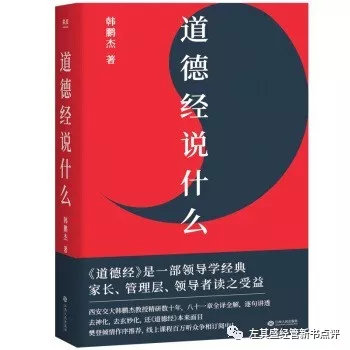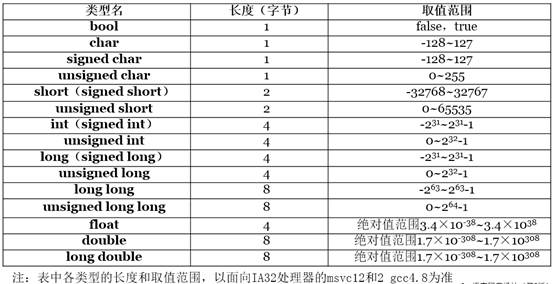可以将文章内容翻译成中文,广告屏蔽插件可能会导致该功能失效(如失效,请关闭广告屏蔽插件后再试):
问题:
I am rotating a CALayer and trying to stop it at its final position after animation is completed.
But after animation completes it resets to its initial position.
(xcode docs explicitly say that the animation will not update the value of the property.)
any suggestions how to achieve this.
回答1:
Edit: Here's the answer, it's a combination of my answer and Krishnan's.
cabasicanimation.fillMode = kCAFillModeForwards;
cabasicanimation.removedOnCompletion = NO;
The default value is kCAFillModeRemoved. (Which is the reset behavior you're seeing.)
回答2:
The problem with removedOnCompletion is the UI element does not allow user interaction.
I technique is to set the FROM value in the animation and the TO value on the object.
The animation will auto fill the TO value before it starts, and when it's removed will leave the object at it's correct state.
// fade in
CABasicAnimation *alphaAnimation = [CABasicAnimation animationWithKeyPath: @"opacity"];
alphaAnimation.fillMode = kCAFillModeForwards;
alphaAnimation.fromValue = NUM_FLOAT(0);
self.view.layer.opacity = 1;
[self.view.layer addAnimation: alphaAnimation forKey: @"fade"];
回答3:
Set the following property:
animationObject.removedOnCompletion = NO;
回答4:
just put it inside your code
CAAnimationGroup *theGroup = [CAAnimationGroup animation];
theGroup.fillMode = kCAFillModeForwards;
theGroup.removedOnCompletion = NO;
回答5:
You can simply set the key of CABasicAnimation to position when you add it to the layer. By doing this, it will override implicit animation done on the position for the current pass in the run loop.
CGFloat yOffset = 30;
CGPoint endPosition = CGPointMake(someLayer.position.x,someLayer.position.y + yOffset);
someLayer.position = endPosition; // Implicit animation for position
CABasicAnimation * animation =[CABasicAnimation animationWithKeyPath:@"position.y"];
animation.fromValue = @(someLayer.position.y);
animation.toValue = @(someLayer.position.y + yOffset);
[someLayer addAnimation:animation forKey:@"position"]; // The explicit animation 'animation' override implicit animation
You can have more information on 2011 Apple WWDC Video Session 421 - Core Animation Essentials (middle of the video)
回答6:
Simply setting fillMode and removedOnCompletion didn't work for me. I solved the problem by setting all of the properties below to the CABasicAnimation object:
CABasicAnimation* ba = [CABasicAnimation animationWithKeyPath:@"transform"];
ba.duration = 0.38f;
ba.fillMode = kCAFillModeForwards;
ba.removedOnCompletion = NO;
ba.autoreverses = NO;
ba.repeatCount = 0;
ba.toValue = [NSValue valueWithCATransform3D:CATransform3DMakeScale(0.85f, 0.85f, 1.0f)];
[myView.layer addAnimation:ba forKey:nil];
This code transforms myView to 85% of its size (3rd dimension unaltered).
回答7:
@Leslie Godwin's answer is not really good, "self.view.layer.opacity = 1;" is done immediately (it takes about one second), please fix alphaAnimation.duration to 10.0, if you have doubts.
You have to remove this line.
So, when you fix fillMode to kCAFillModeForwards and removedOnCompletion to NO, you let the animation remains in the layer. If you fix the animation delegate and try something like:
- (void)animationDidStop:(CAAnimation *)anim finished:(BOOL)flag
{
[theLayer removeAllAnimations];
}
...the layer restores immediately at the moment you execute this line. It's what we wanted to avoid.
You must fix the layer property before remove the animation from it. Try this:
- (void)animationDidStop:(CAAnimation *)anim finished:(BOOL)flag
{
if([anim isKindOfClass:[CABasicAnimation class] ]) // check, because of the cast
{
CALayer *theLayer = 0;
if(anim==[_b1 animationForKey:@"opacity"])
theLayer = _b1; // I have two layers
else
if(anim==[_b2 animationForKey:@"opacity"])
theLayer = _b2;
if(theLayer)
{
CGFloat toValue = [((CABasicAnimation*)anim).toValue floatValue];
[theLayer setOpacity:toValue];
[theLayer removeAllAnimations];
}
}
}
回答8:
A CALayer has a model layer and a presentation layer. During an animation, the presentation layer updates independently of the model. When the animation is complete, the presentation layer is updated with the value from the model. If you want to avoid a jarring jump after the animation ends, the key is to keep the two layers in sync.
If you know the end value, you can just set the model directly.
self.view.layer.opacity = 1;
But if you have an animation where you don't know the end position (e.g. a slow fade that the user can pause and then reverse), then you can query the presentation layer directly to find the current value, and then update the model.
NSNumber *opacity = [self.layer.presentationLayer valueForKeyPath:@"opacity"];
[self.layer setValue:opacity forKeyPath:@"opacity"];
Pulling the value from the presentation layer is also particularly useful for scaling or rotation keypaths. (e.g. transform.scale, transform.rotation)
回答9:
Without using the removedOnCompletion
You can try this technique:
self.animateOnX(item: shapeLayer)
func animateOnX(item:CAShapeLayer)
{
let endPostion = CGPoint(x: 200, y: 0)
let pathAnimation = CABasicAnimation(keyPath: "position")
//
pathAnimation.duration = 20
pathAnimation.fromValue = CGPoint(x: 0, y: 0)//comment this line and notice the difference
pathAnimation.toValue = endPostion
pathAnimation.fillMode = kCAFillModeBoth
item.position = endPostion//prevent the CABasicAnimation from resetting item's position when the animation finishes
item.add(pathAnimation, forKey: nil)
}
回答10:
This works:
let animation = CABasicAnimation(keyPath: "opacity")
animation.fromValue = 0
animation.toValue = 1
animation.duration = 0.3
someLayer.opacity = 1 // important, this is the state you want visible after the animation finishes.
someLayer.addAnimation(animation, forKey: "myAnimation")
Core animation shows a 'presentation layer' atop your normal layer during the animation. So set the opacity (or whatever) to what you want to be seen when the animation finishes and the presentation layer goes away. Do this on the line before you add the animation to avoid a flicker when it completes.
If you want to have a delay, do the following:
let animation = CABasicAnimation(keyPath: "opacity")
animation.fromValue = 0
animation.toValue = 1
animation.duration = 0.3
animation.beginTime = someLayer.convertTime(CACurrentMediaTime(), fromLayer: nil) + 1
animation.fillMode = kCAFillModeBackwards // So the opacity is 0 while the animation waits to start.
someLayer.opacity = 1 // <- important, this is the state you want visible after the animation finishes.
someLayer.addAnimation(animation, forKey: "myAnimation")
Finally, if you use 'removedOnCompletion = false' it'll leak CAAnimations until the layer is eventually disposed - avoid.
回答11:
So my problem was that I was trying to rotate an object on pan gesture and so I had multiple identical animations on each move. I had both fillMode = kCAFillModeForwards and isRemovedOnCompletion = false but it didn't help. In my case, I had to make sure that the animation key is different each time I add a new animation:
let angle = // here is my computed angle
let rotate = CABasicAnimation(keyPath: "transform.rotation.z")
rotate.toValue = angle
rotate.duration = 0.1
rotate.isRemovedOnCompletion = false
rotate.fillMode = kCAFillModeForwards
head.layer.add(rotate, forKey: "rotate\(angle)")
回答12:
It seems that removedOnCompletion flag set to false and fillMode set to kCAFillModeForwards doesn't work for me either.
After I apply new animation on a layer, an animating object resets to its initial state and then animates from that state.
What has to be done additionally is to set the model layer's desired property according to its presentation layer's property before setting new animation like so:
someLayer.path = ((CAShapeLayer *)[someLayer presentationLayer]).path;
[someLayer addAnimation:someAnimation forKey:@"someAnimation"];
回答13:
Core animation maintains two layer hierarchies: the model layer and the presentation layer. When the animation is in progress, the model layer is actually intact and keeps it initial value. By default, the animation is removed once the it's completed. Then the presentation layer falls back to the value of the model layer.
Simply setting removedOnCompletion to NO means the animation won't be removed and wastes memory. In addition, the model layer and the presentation layer won't be synchronous any more, which may lead to potential bugs.
So it would be a better solution to update the property directly on the model layer to the final value.
self.view.layer.opacity = 1;
CABasicAnimation *animation = [CABasicAnimation animationWithKeyPath:@"opacity"];
animation.fromValue = 0;
animation.toValue = 1;
[self.view.layer addAnimation:animation forKey:nil];
If there's any implicit animation caused by the first line of above code, try to turn if off:
[CATransaction begin];
[CATransaction setDisableActions:YES];
self.view.layer.opacity = 1;
CABasicAnimation *animation = [CABasicAnimation animationWithKeyPath:@"opacity"];
animation.fromValue = 0;
animation.toValue = 1;
[self.view.layer addAnimation:animation forKey:nil];
[CATransaction commit];
- Reference:
- Animations Explained by objc.io.
- "iOS 7 Programming Pushing the Limits" by Rob Napier and Mugunth Kumar.
回答14:
The easiest solution is to use implicit animations. This will handle all of that trouble for you:
self.layer?.backgroundColor = NSColor.red.cgColor;
If you want to customize e.g. the duration, you can use NSAnimationContext:
NSAnimationContext.beginGrouping();
NSAnimationContext.current.duration = 0.5;
self.layer?.backgroundColor = NSColor.red.cgColor;
NSAnimationContext.endGrouping();
Note: This is only tested on macOS.
I initially did not see any animation when doing this. The problem is that the layer of a view-backed layer does not implicit animate. To solve this, make sure you add a layer yourself (before setting the view to layer-backed).
An example how to do this would be:
override func awakeFromNib() {
self.layer = CALayer();
//self.wantsLayer = true;
}
Using self.wantsLayer did not make any difference in my testing, but it could have some side effects that I do not know of.



